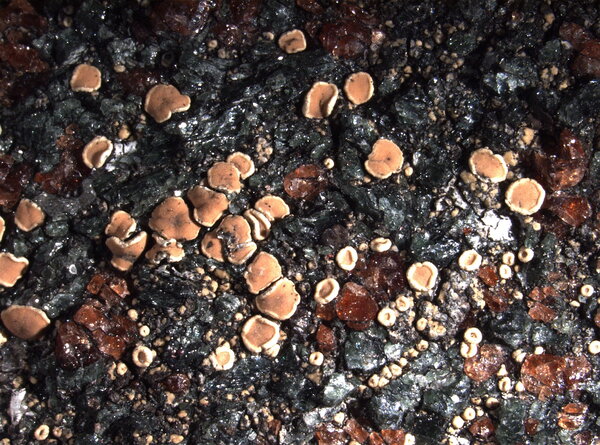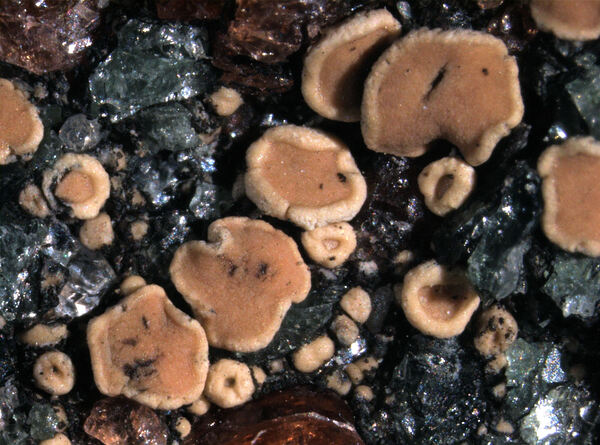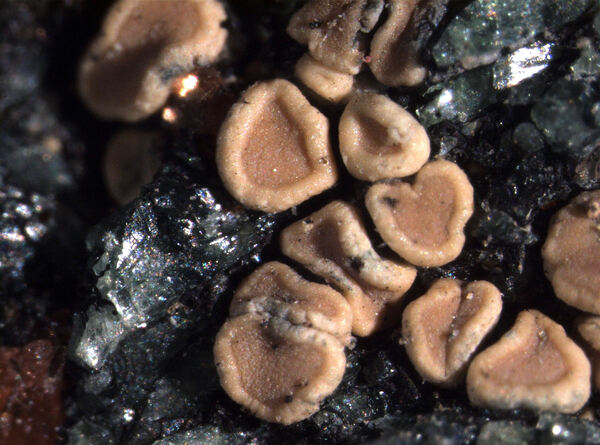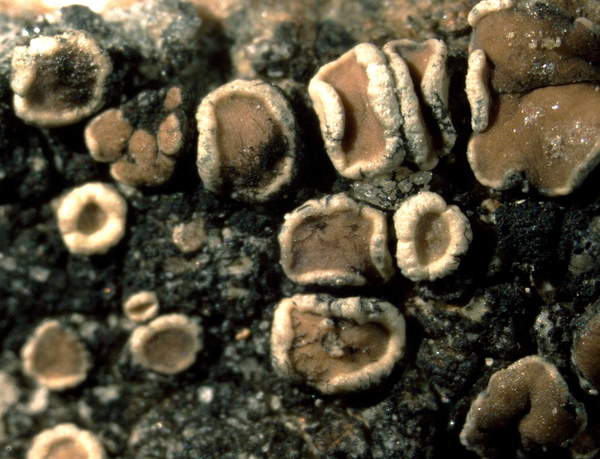Lecanora silvae-nigrae V. Wirth
Nova Hedwigia, 17: 181, 1969.
Synonyms:
Distribution: N - Frl (Tretiach & Hafellner 2000), TAA (Nascimbene & al. 2022), Lomb (Nascimbene & al. 2021), Piem (Isocrono & al. 2004, Isocrono & Piervittori 2008), VA (Piervittori & al. 2004), Emil (Fariselli & al. 2020). C - Tosc (Nascimbene & al. 2021), Sar.
Description: Thallus crustose, inapparent or consisting of a few, scattered, yellowish green or yellowish grey, flat, often crenulate areoles. Apothecia lecanorine, 1-2.5 mm across, sessile and constricted at base, with a pale yellowish brown to medium brown, flat to slightly convex disc and an initially thick and prominent, then thinner, often wavy, greenish yellow to sulphur yellow thalline margin. Thalline exciple corticate, the cortex with an outer layer of granules, strongly gelatinized; epithecium yellowish brown, c. 15 µm thick; hymenium colourless, 55-60 µm high; paraphyses sparingly branched and anastomosing, slightly thickened at apex; hypothecium colourless. Asci 8-spored, clavate, very thin-walled, with a K/I+ blue, tall tholus penetrated by a faintly amyloid apical cushion, the wall K/I-, surrounded by a blue outer layer, Lecanora-type. Ascospores 1-celled, hyaline, ellipsoid, 12-16 x 5-7.5 µm. Pycnidia immersed, with a pale yellow-brown ostiole. Conidia acicular to arcuate. Photobiont chlorococcoid. Spot tests: thallus K- or K+ yellow-brown, C-, KC+ yellow, P-; margin of apothecia (cortex and especially medulla) P+ orange-red, K+ brownish yellow. Chemistry: cortex with usnic acid, apothecial margins (cortex and especially medulla) with protocetraric and rangiformic acids.Note: a southern European orophyte found on siliceous, often iron-rich rocks, mostly near and above treeline.
Growth form: Crustose
Substrata: rocks
Photobiont: green algae other than Trentepohlia
Reproductive strategy: mainly sexual
Commonnes-rarity: (info)
Alpine belt: very rare
Subalpine belt: rare
Oromediterranean belt: extremely rare
Montane belt: extremely rare
Submediterranean belt: absent
Padanian area: absent
Humid submediterranean belt: absent
Humid mediterranean belt: absent
Dry mediterranean belt: absent

Predictive model
Herbarium samples
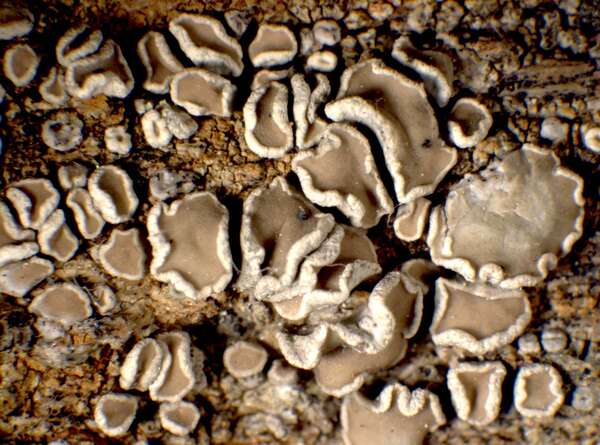

P.L. Nimis; Owner: Department of Life Sciences, University of Trieste
Herbarium: TSB (33851)
2001/11/26
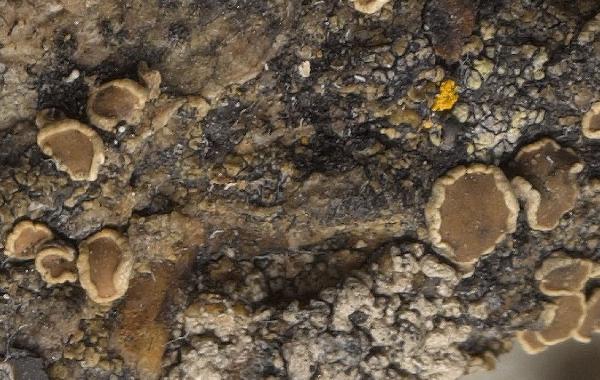
Detail from: https://gzu.jacq.org/GZU000290841
GZU000290841 - Poelt,J. & Wirth,V. 4618 Date 1967-05-19
Location Germany / Baden-Württemberg
Label Schwarzwald, Baden: Ostseitige Steilfläche eines Felszahnes am Weg vom Böllner Eck über Böllen, Kreis Lörrach, zum Belchen ; Alt. 1100 m
Habitat Ostseitige Steilfläche eines Felszahnes
Growth form: Crustose
Substrata: rocks
Photobiont: green algae other than Trentepohlia
Reproductive strategy: mainly sexual
Commonnes-rarity: (info)
Alpine belt: very rare
Subalpine belt: rare
Oromediterranean belt: extremely rare
Montane belt: extremely rare
Submediterranean belt: absent
Padanian area: absent
Humid submediterranean belt: absent
Humid mediterranean belt: absent
Dry mediterranean belt: absent

Predictive model
| Herbarium samples |


P.L. Nimis; Owner: Department of Life Sciences, University of Trieste
Herbarium: TSB (33851)
2001/11/26

 INDEX FUNGORUM
INDEX FUNGORUM
 GBIF
GBIF
 DOLICHENS
DOLICHENS

